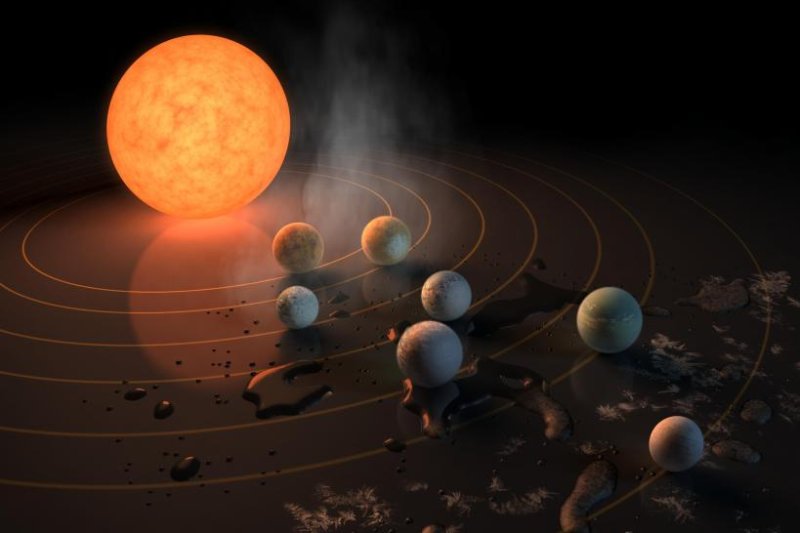New research suggests the build up of carbon monoxide in the atmospheres of planets in the TRAPPIST-1 system likely make the alien worlds too toxic for complex life. Photo by JPL/NASA
June 10 (UPI) -- New research suggests the conditions necessary for complex life forms may be even rarer than planetary scientists previously thought. Researchers determined the buildup of toxic gases in the atmosphere makes most exoplanets uninhabitable.
Planetary scientists classify alien planets as being "habitable" or in the "habitable zone" if they're close enough to their host star to keep some of their water liquid, or unfrozen, but not so close it all evaporates away.
According to a new study published Monday in the Astrophysical Journal, the simple habitability definition is perfectly fine for basic life forms, like microbes, but not for more complex organisms.
When scientists accounted for the likely levels of toxic gases in the atmospheres of so-called habitable planets, they found only a small percentage could host complex life forms.
"This is the first time the physiological limits of life on Earth have been considered to predict the distribution of complex life elsewhere in the universe," Timothy Lyons, a professor of biogeochemistry at the University of California, Riverside, said in a news release.
Scientists used simulations to study climate and chemistry dynamics in the atmospheres of several different planets. First, scientists focused on CO2. For planets on the outer edge of the habitable zone, carbon dioxide is necessary to keep the planet warm enough to host liquid water. But models showed the amount of CO2 necessary to do so would be well above the threshold considered safe for plants and animals.
When accounting for CO2 alone, scientists determined only half of the universe's known habitable zones could actually host complex life. Researchers were able to eliminate entire star systems by considering the presence of carbon monoxide. Cooler, dimmer stars like Proxima Centauri and TRAPPIST-1 produce a lot of ultraviolet radiation, which triggers the production of carbon monoxide in the atmosphere. Small amounts of carbon monoxide can prevent the movement of oxygen throughout an animal's circulatory system -- proving deadly. On Earth, the sun's powerful rays drive chemical reactions that destroy carbon monoxide.
With the database of so-called habitable planets getting bigger and bigger, scientists need to begin narrowing their focus.
"Our discoveries provide one way to decide which of these myriad planets we should observe in more detail," said Christopher Reinhard, a former UCR graduate student now an assistant professor at the Georgia Institute of Technology. "We could identify otherwise habitable planets with carbon dioxide or carbon monoxide levels that are likely too high to support complex life."















